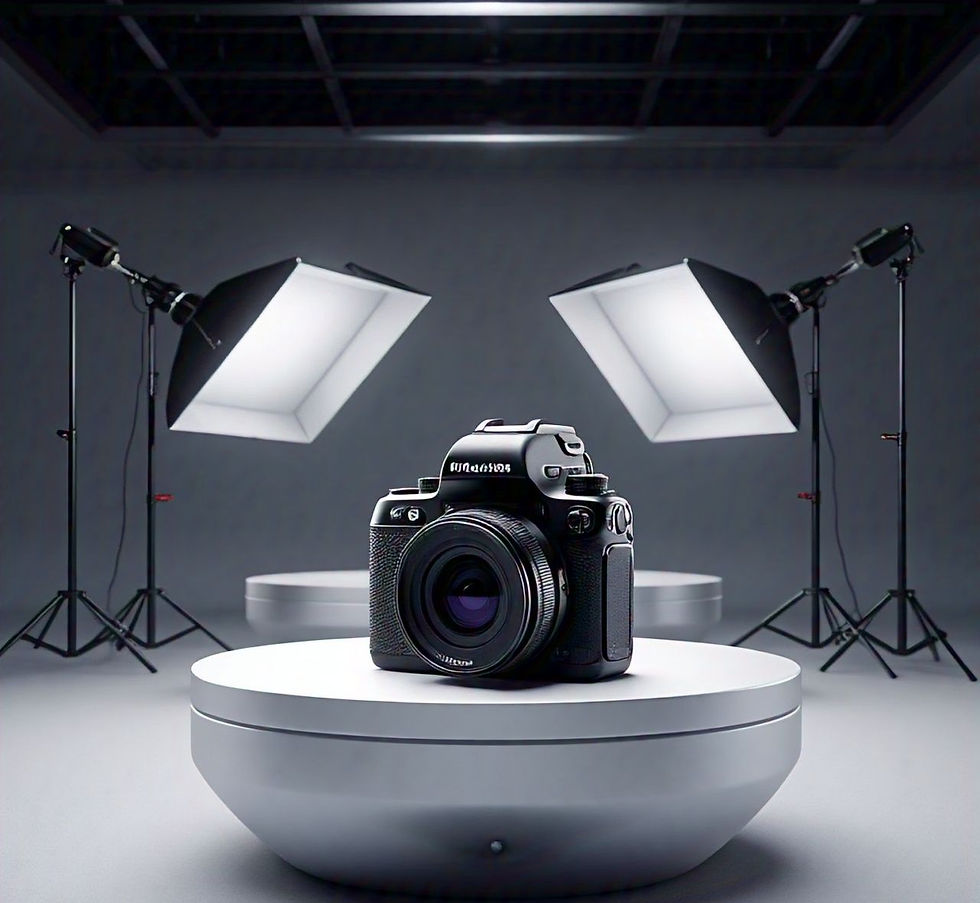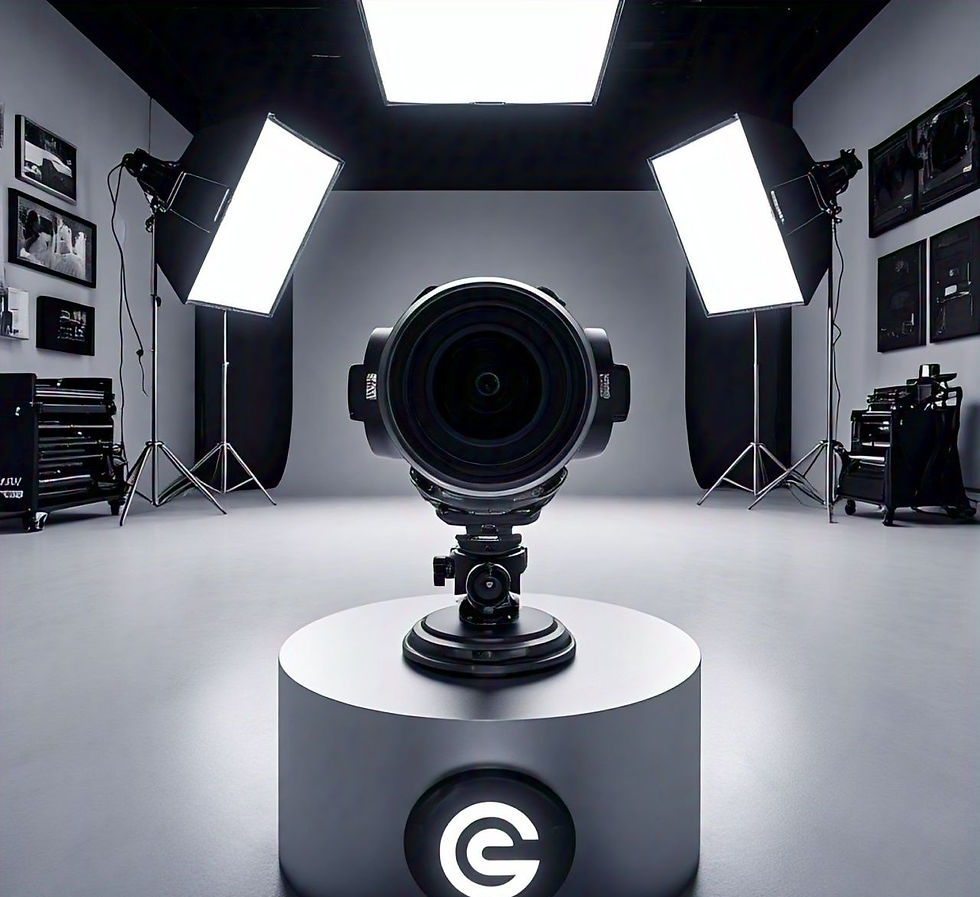Types of Cameras You Should Know
- Leke Folorunsho
- Dec 9, 2024
- 5 min read
Updated: Jan 31, 2025
In the ever-changing world of photography, a convert camera can be a game changer for shooting photographs that tell a narrative. Understanding the various sorts of conversion cameras available is critical for anyone who is a novice photographer, a seasoned professional, or simply enjoys documenting moments.
The internal ultraviolet and infrared light blocking sensor filters, as well as the low pass anti-aliasing sensor filter, are removed when modifying the spectrum sensitivity of a digital camera. In this comprehensive overview, we will look at the numerous types of conversion cameras that photographers should be familiar with.
1. Digital Single-Lens Reflex (DSLR) Cameras

Overview of DSLR cameras
DSLR cameras have long been considered the gold standard in photography. They have a mirror arrangement that allows you to see precisely what the lens sees through the optical viewfinder. This makes them extremely popular with both beginners and pros.
Key Features of DSLR Cameras
Features include interchangeable lenses, superior image quality, long-lasting battery, and manual controls for complex settings.
- An optical viewfinder for real-time composition.
Recommended for: Photographers seeking high-quality photographs with flexibility and control over their shooting process
2. Mirror less Cameras

Mirror less cameras have gained popularity due to their tiny size and reduced weight compared to DSLRs. As the name implies, they lack the mirror mechanism used in DSLRs, allowing for a more sleek design.
Key features include interchangeable lenses, electronic viewfinders for previewing images, and faster autofocus systems.
- Video capabilities frequently surpass those of DSLRs.
Recommended for: Photographers seeking portability without sacrificing quality, especially for vacation and street photography
3. Compact cameras
Compact cameras, sometimes known as point-and-shoot cameras, are designed for ease of use. They frequently come with built-in lenses and preset settings, making them accessible to everyone.

Key features:
- Small and light.
Features include automatic focus and exposure, as well as basic video recording capabilities.
- Frequently have Wi-Fi sharing features.
Recommended for: Casual photographers seeking a straightforward approach to capturing ordinary moments without the need for complicated settings
4. Bridge cameras
. Bridge cameras combine features from DSLRs with small cameras.
. They often have larger sensors than tiny cameras and offer some manual controls while remaining user-friendly.

Key Features:
- Compact and lightweight
- Waterproof and shockproof designs
- Wide-angle lenses for immersive shots
- Mounting options for various activities Key features include fixed lenses with zoom capability.
- Larger sensors than ordinary point-and-shoot cameras.
- DSLR-style operation with electronic viewfinders
- Various shooting modes.
Recommended for: Photographers seeking advanced features without the heft of a DSLR
5. Action cameras
Action cameras are small, durable devices that capture photographs and films in severe settings. They are known for their ability to capture fast-paced action and are popular among adventurers.

Recommended For:
Outdoor adventurers and sports aficionados require a camera that can resist harsh environments.
6: Smartphone Cameras
Smartphones have advanced camera technology, making them highly effective instruments for photography. They include capabilities such as various lenses, AI advancements, and powerful editing tools.

Key benefits include portability, ease of use, and integrated editing and sharing capabilities.
- Various lens settings, including macro and wide-angle.
- Different app connections for creative photography.
Recommended for: Those looking for a versatile tool for everyday photography without the need to carry extra equipment
7: Medium Format Cameras
Medium format cameras are generally used by professionals seeking superior quality. They are noted for their bigger sensors, which allow for extremely high image quality and detail.

Key Features: - Larger sensors than full-frame cameras - Superior image quality and dynamic range.
- Interchangeable lenses - Suitable for commercial and landscape photography.
Recommended for professional photographers working in high-resolution areas such as fashion, product design, and fine art
8. Large-Format Cameras
Large format cameras provide excellent image quality and artistic expression.. They use film or digital backs that are 4x5 inches or larger, resulting in incredibly detailed photographs.

Key features include great resolution and detail, extensive focus and perspective control, huge print size without quality compromise, and possibilities for film or digital capture.
Recommended for: Serious photographers who value the art of photography and are committed to mastering their trade
9. Film Cameras
Overview: Despite the digital revolution, film cameras are gaining popularity among enthusiasts and artists. They have a distinct style that many people find pleasant and nostalgic.

Key Features: - Available in 35mm, medium, and large sizes.
Features include unique film grain and color rendering, as well as manual exposure, shutter speed, and focus adjustments.
- A slower, more deliberate shooting technique.
Recommended for: Photographers looking to explore the tactile and artistic aspects of photography with film
10. 360° Cameras
360-degree cameras provide a complete spherical vision of their surroundings. They are becoming more popular for VR content, virtual tours, and immersive storytelling.

Key features include dual lenses for shooting 360-degree views, high-definition video recording, and stitched photos for seamless panoramas.
- Integration with mobile apps for easy content sharing.-
Recommended for content creators and marketers aiming to engage consumers through immersive experiences
11. Instant Cameras
Instant cameras, sometimes known as Polaroid cameras, have seen a significant resurgence in recent years. They employ unique film to create images on-the-spot, making them ideal for parties, events, and casual sessions.
Key feature: - Instant photo developing.
- Retro style and simple point-and-shoot design.
- A social and interactive experience.
Recommended for those seeking a fun, tactile experience and immediate enjoyment with their photographs
12. Specialty Cameras
Overview:
Specialty cameras are equipment that are specifically built for certain forms of photography. Examples include infrared, low-light, and pinhole cameras. Each has unique strengths and applications.
Key characteristics include tailored features for specialist photography and the ability to create distinctive visual effects.
- Frequently demand specific knowledge.
Recommended for: Photographers seeking to develop their skill set through new techniques and aesthetics
Conclusion
The world of conversion cameras is extremely diversified, providing to a wide variety of styles, interests, and requirements. Whether you're a newbie hoping to get started in photography or an expert looking to expand your toolkit, understanding the different camera types will help you make informed decisions regarding your next purchase. From the traditional DSLR to the cutting-edge smartphone camera, each offers distinct features and perks that can improve your shooting experience.
In an age where capturing memories is easier than ever, taking the time to learn about the many types of cameras will not only enhance your skills but also enrich the stories you tell with your images. Choose wisely, experiment freely, and, most importantly, enjoy the process of capturing the world through your lens!




Comments